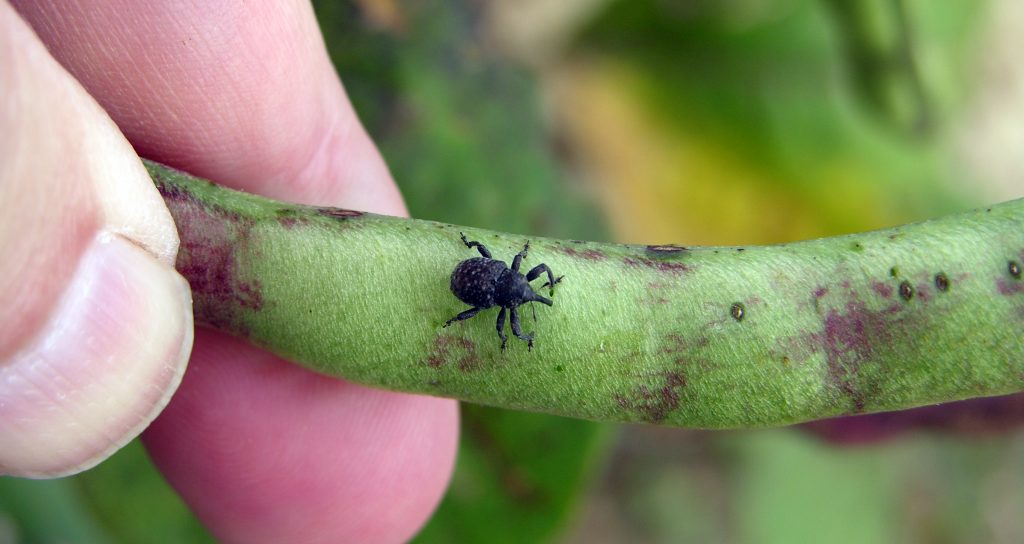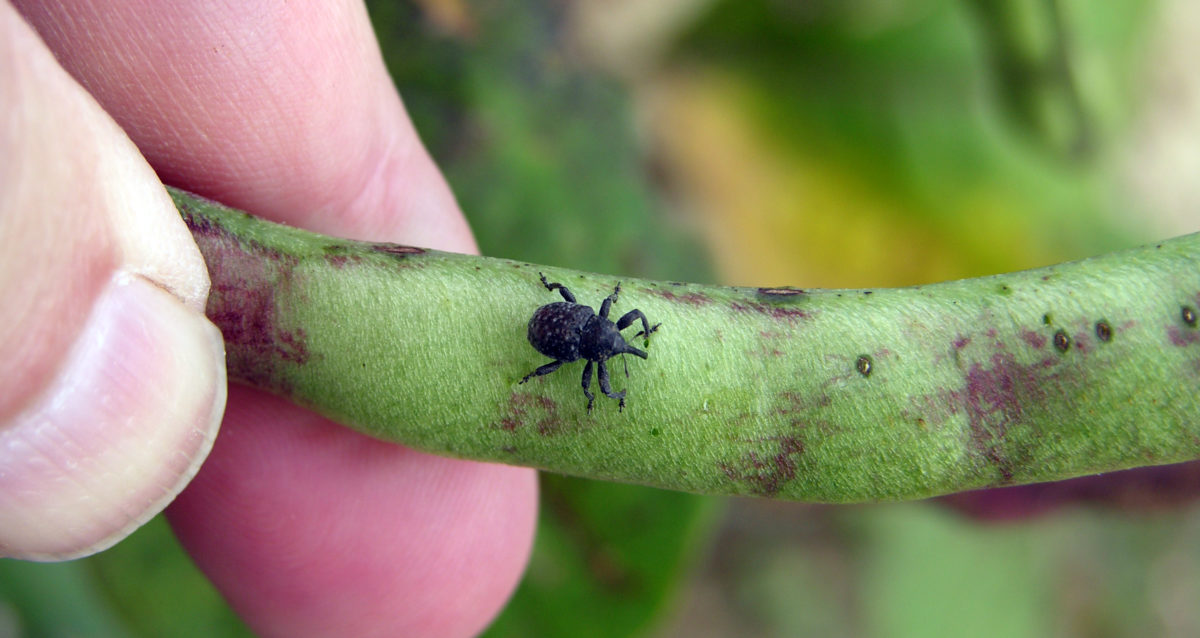
Another southern pea season means one thing for Alabama producers; cowpea curculio will be a factor.
“If you’re a southern pea grower, odds are you have seen this insect or will see this insect at some point in the production cycle,” said Neil Kelly, Alabama Extension Regional agent in Southeast Alabama. “Over the last several years, it has become devastating to southern pea crops in the Southeast for sure.”
As devastating as cowpea curculios can be, it’s important that growers utilize every tool in the toolbox.
Crop rotation helps prevent pest buildup. Spray frequently in 3-to-5-day intervals when label permits. Alternative insecticides applied to the soil and foliar application need high moisture.
Kelly recommends that growers start insecticidal treatments two to three weeks before flowering. Second generation curculios can overwhelm the crop if not controlled.
Mix PBO with synthetic pyrethroids, but it’s important to rotate chemicals to prevent resistance.
Another important management tactic is also something that should be done every year – scouting. Get ahead of the problem before it worsens throughout the season.
“Obviously, you’ve got to get out there and do your scouting. You’ve got to be diligent,” Kelly said. “You need to scout early in the morning. These insects have a tendency to go down and hide when the sun is bright. Usually, peak activity is sometime around 9:30, 10 o’clock in the morning. Much after that, it starts to get hot, and you’ll see them move further down in the canopy.”
What makes curculios difficult to spot is they’ll drop down and play possum at the base of the plants. It’s also important to check the weeds around the field, specifically broomsedge, narrow-leaved vetch and purple cudweed. Growers need to intensify scouting when flowering begins.










